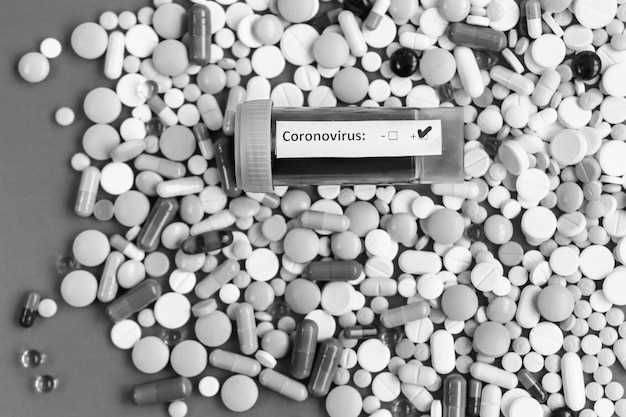
Looking for an effective solution to manage your symptoms? Methylprednisolone and Lexapro combination might be the answer you’ve been searching for.
Methylprednisolone is a powerful corticosteroid that helps reduce inflammation and suppress the immune system, while Lexapro is a selective serotonin reuptake inhibitor (SSRI) commonly prescribed to treat anxiety and depression.
Together, these two medications can provide relief from a range of conditions, offering a comprehensive approach to managing your health.
If you’re ready to take control of your symptoms and improve your quality of life, ask your healthcare provider about the benefits of Methylprednisolone and Lexapro today.
Description of Methylprednisolone

Methylprednisolone is a synthetic corticosteroid medication that is commonly used to reduce inflammation and suppress the immune system. It is a powerful anti-inflammatory drug that is often prescribed to treat a variety of conditions, including arthritis, asthma, allergies, skin conditions, and certain autoimmune disorders.
How does it work?
Methylprednisolone works by decreasing the production of certain chemicals in the body that cause inflammation. This helps to reduce swelling, redness, and pain associated with inflammatory conditions.
Important information:
It is important to follow your healthcare provider’s instructions carefully when taking methylprednisolone. This medication should be taken exactly as prescribed and should not be stopped suddenly without consulting your doctor.
Properties and Usage
Lexapro is a selective serotonin reuptake inhibitor (SSRI) antidepressant that is commonly prescribed to treat depression and anxiety disorders. It works by increasing the levels of serotonin in the brain, which helps to improve mood, sleep, appetite, and energy levels.
Usage: Lexapro is typically taken orally, once a day, with or without food. The dosage will vary depending on the individual and the severity of their condition. It may take several weeks for the full effects of Lexapro to be felt, so it is important to continue taking it as prescribed by a healthcare provider.
Properties: Lexapro has a relatively favorable side effect profile compared to other antidepressants. Common side effects may include nausea, dizziness, headache, insomnia, and sexual dysfunction. It is important to discuss any concerns or side effects with a healthcare provider.
Description of Lexapro
Lexapro is a prescription medication used to treat depression and generalized anxiety disorder (GAD). It belongs to a class of drugs known as selective serotonin reuptake inhibitors (SSRIs). Lexapro works by increasing the levels of serotonin, a neurotransmitter in the brain that helps regulate mood and emotions.
Benefits
Lexapro can help alleviate symptoms of depression and anxiety, such as persistent sadness, loss of interest in activities, feelings of worthlessness, excessive worry, and difficulty concentrating. It may also improve sleep, appetite, and energy levels in individuals with these conditions.
Side Effects
Common side effects of Lexapro may include nausea, headache, dizziness, dry mouth, and fatigue. Some people may also experience sexual side effects, such as decreased libido or difficulty achieving orgasm. In some cases, Lexapro can cause more serious side effects, so it’s essential to talk to a healthcare provider about any concerns.
Benefits and Side Effects
Benefits of Methylprednisolone:
Methylprednisolone is a corticosteroid that helps reduce inflammation and suppress the immune system. It is commonly used to treat a variety of conditions such as allergic reactions, arthritis, asthma, and skin conditions. Methylprednisolone can provide relief from pain, swelling, and redness caused by inflammation.
Side Effects of Methylprednisolone:
While Methylprednisolone can be effective in treating various conditions, it may also cause some side effects. Common side effects include headache, dizziness, stomach upset, and changes in appetite. Long-term use of Methylprednisolone may lead to more serious side effects such as bone loss, high blood pressure, and mood changes.
Benefits of Lexapro:
Lexapro is a selective serotonin reuptake inhibitor (SSRI) commonly used to treat depression and anxiety disorders. It can help improve mood, sleep, appetite, and energy levels in individuals suffering from these conditions. Lexapro is also known for its relatively low risk of causing weight gain compared to other antidepressants.
Side Effects of Lexapro:
Like any medication, Lexapro may cause some side effects. Common side effects include nausea, drowsiness, insomnia, and sexual dysfunction. In some cases, Lexapro may increase anxiety or cause changes in mood. It is important to monitor and report any adverse reactions to your healthcare provider.
Comparison of Methylprednisolone and Lexapro:
While Methylprednisolone and Lexapro are both effective medications in their respective treatments, they belong to different classes of drugs and have distinct mechanisms of action. Methylprednisolone is a corticosteroid that reduces inflammation, while Lexapro is an SSRI that affects serotonin levels in the brain. It is essential to consult with a healthcare provider to determine the most appropriate treatment option based on individual medical conditions and considerations.
Comparison of Methylprednisolone and Lexapro
When comparing Methylprednisolone and Lexapro, it is important to note that they are two different medications with distinct functions and purposes.
Methylprednisolone
Methylprednisolone is a corticosteroid medication that is primarily used to reduce inflammation in the body. It is commonly prescribed to treat a variety of conditions, including allergies, arthritis, asthma, and inflammatory disorders.
Lexapro
Lexapro, on the other hand, is an antidepressant medication that belongs to a class of drugs known as selective serotonin reuptake inhibitors (SSRIs). It is commonly prescribed to treat depression and anxiety disorders.
While Methylprednisolone and Lexapro are both important medications, they serve very different purposes and are used to treat different conditions. It is crucial to consult with a healthcare provider to determine which medication is appropriate for your specific condition.
Differences in Function
When comparing Methylprednisolone and Lexapro, it’s important to note the significant differences in their functions. Methylprednisolone is a corticosteroid that works by suppressing the immune system and reducing inflammation in the body. It is commonly used to treat various conditions such as allergic reactions, skin conditions, arthritis, and certain cancers.
On the other hand, Lexapro is a selective serotonin reuptake inhibitor (SSRI) and is primarily used to treat depression and anxiety disorders. It works by increasing the levels of serotonin in the brain, which helps improve mood and reduce symptoms of depression and anxiety.
Combining Methylprednisolone and Lexapro
Combining Methylprednisolone, a corticosteroid, with Lexapro, a selective serotonin reuptake inhibitor (SSRI), should be done cautiously under the supervision of a healthcare provider. The combination of these medications may increase the risk of side effects such as mood changes, agitation, and gastrointestinal issues.
It is important to inform your doctor about all medications you are taking, including prescription, over-the-counter, and herbal supplements, before starting treatment with Methylprednisolone and Lexapro. Your healthcare provider will monitor you closely for any potential interactions and adjust your treatment plan as needed.
While Methylprednisolone is primarily used to treat inflammation and immune system disorders, and Lexapro is commonly prescribed for depression and anxiety, combining these medications may be necessary in certain cases. Your doctor will determine the appropriate dosage and duration of treatment based on your individual condition and needs.
It is essential to follow your doctor’s instructions carefully and report any unusual symptoms or side effects while taking Methylprednisolone and Lexapro together. Do not stop or change your medication regimen without consulting your healthcare provider first.
Potential Interactions
Combining Methylprednisolone and Lexapro may lead to potential interactions that should be carefully monitored. Both medications can affect the central nervous system and may increase the risk of side effects such as dizziness, drowsiness, and confusion when taken together.
It is important to consult with a healthcare provider before combining Methylprednisolone and Lexapro to ensure the dosage and duration of treatment are appropriate. Additionally, some individuals may be more susceptible to interactions than others, especially those with certain medical conditions or taking other medications.
Drug-Drug Interactions

| Interaction | Description |
|---|---|
| Increased Risk of Bleeding | Both Methylprednisolone and Lexapro can increase the risk of bleeding, so combining them may further enhance this risk. |
| Decreased Effectiveness | There is a possibility that the effectiveness of one or both medications may be reduced when taken together. |
| Changes in Blood Pressure | Combining these medications may lead to changes in blood pressure, requiring monitoring and adjustments in dosage. |
Overall, it is crucial to be aware of the potential interactions between Methylprednisolone and Lexapro to ensure safe and effective treatment. Regular communication with a healthcare provider is essential to minimize risks and maximize the benefits of combined therapy.
